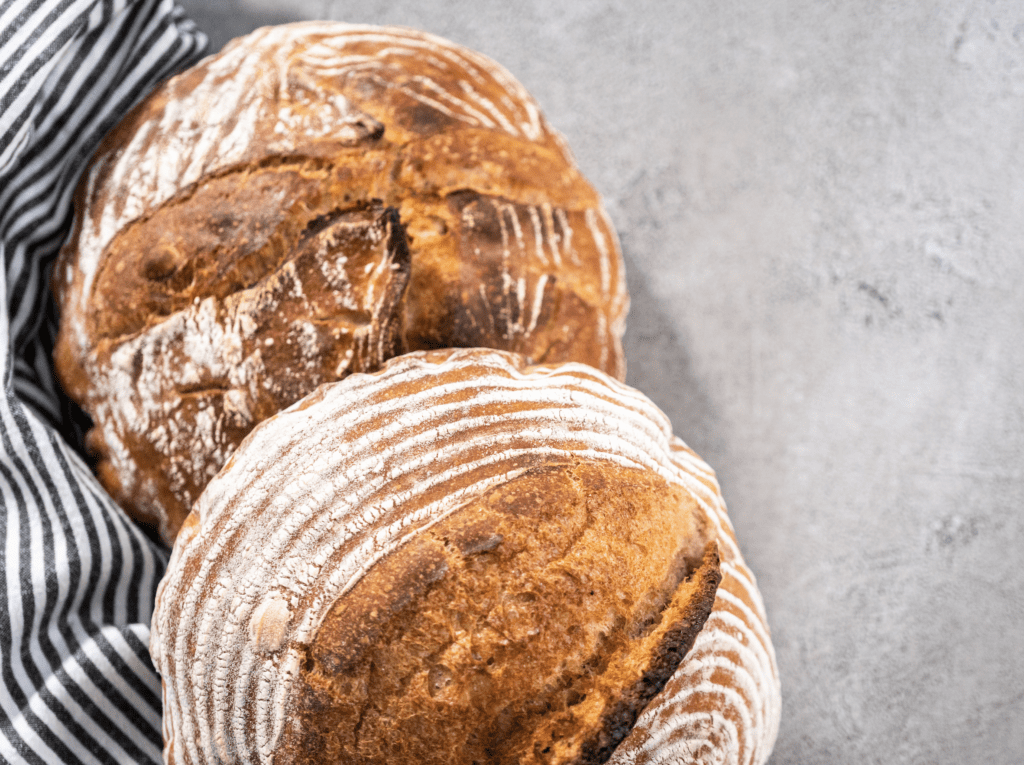Welcome to the world of sourdough bread, where even a loaf that’s lost its initial allure can be restored to its former glory. Whether your bread has been relegated to the back of the freezer or has gone stale on the counter, there’s no need to discard it! (bread pun 🍞 haha). This comprehensive how-to guide will provide you with detailed steps and insightful tips on how to rehydrate, refresh, and revive your sourdough bread, transforming it from a frozen or stale state into a freshly baked delight.
Understanding the Basics of Bread Staling
To effectively refresh and revive sourdough bread, it’s crucial to understand what happens when bread goes stale. Contrary to popular belief, staling is not merely about drying out. It involves a process called retrogradation, where the starch molecules in the bread begin to recrystallize. This recrystallization leads to a hardening of the crumb and a loss of moisture, making the bread seem dry and tough. Interestingly, this process occurs faster at cooler temperatures, which is why refrigerating bread can actually hasten staling. Our goal in refreshing stale bread is to reverse this staling process.
Reviving Frozen Sourdough Bread
Step 1: Thawing
Dealing with frozen sourdough bread requires a gentle touch. The first step is to allow your loaf to thaw completely at room temperature. This slow thawing is essential as it helps maintain the bread’s texture and prevents the formation of soggy spots, which can occur with rapid thawing methods like microwaving. The time it takes for a loaf to thaw will depend on its size and density, but it typically ranges from a few hours for smaller loaves to overnight for larger ones.
Step 2: Rehydrating
Once your loaf is fully thawed, the next step is to reintroduce moisture. Lightly run the bread under tap water, ensuring you dampen the entire crust without saturating the loaf. This step might seem counter-intuitive, but it’s critical for the revival process. The moisture on the crust will convert into steam during baking, which permeates the loaf and brings moisture back into the bread.
Step 3: Re-baking
Preheat your oven to 350°F (175°C). Once the oven reaches the desired temperature, place your damp loaf directly on the oven rack. The heat will crisp up the crust and warm the inside, creating steam that rehydrates the crumb. Bake for 10-20 minutes, but be vigilant. The exact time will depend on your loaf’s size and initial moisture level. Your goal is to achieve a crust that crackles when pressed and a soft, warm interior that reminds you of a loaf freshly pulled from the oven.
Refreshing Stale or Hard Sourdough Bread
If your sourdough bread has become stale or hard but hasn’t been frozen, you can still bring it back to a palatable state.
Step 1: Soaking
For stale bread, the process begins with a thorough soaking. Hold the loaf under running tap water, allowing the crust to become evenly moist. This moisture is more critical for stale bread as it has undergone more extensive moisture loss compared to frozen bread. Ensure that the entire surface is damp but not overly saturated, as this can lead to a mushy interior.
Step 2: Baking
Like with frozen bread, preheat your oven to 350°F (175°C). Place the soaked bread directly on the oven rack and bake for about 10-20 minutes. The time in the oven is crucial and should be adjusted based on the bread’s initial condition. You want the crust to be rejuvenated, becoming crisp and golden, while the interior should be soft and warm, echoing the feel of freshly baked bread.
Tips for Best Results
- Avoid Over-Soaking: While it’s important to moisten the bread, excessive water can result in a gummy interior.
- Monitor the Oven: Keep a close eye on your bread while it bakes. The transformation from stale to fresh can happen quickly, and you don’t want to over-bake it.
- Adjust Timing: Different loaves, depending on their size, density, and initial moisture content, may require varied baking times. Use your senses to judge when the bread has been adequately revived.
Embracing Sustainability and Flavor
This simple yet effective method of rehydrating, refreshing, and reviving sourdough bread not only enhances your culinary experience but also contributes to sustainable living. By reviving your bread, you are actively participating in reducing food waste and ensuring every loaf you purchase or bake reaches its full potential in nourishing your family.
So, the next time you find yourself with a loaf of sourdough that’s past its prime, remember that all is not lost. With these steps, you can breathe new life into your bread, enjoying the rich, complex flavors of sourdough as if it were just baked. We invite you to try this method and share your experiences. Comment below to let others know how this process has worked for you, and share any additional tips you may have discovered along the way.
Happy baking and thank you for reading The Sourdough People website!






















We tried this method and got it wrong the first time as we poured too much water onto the sourdough loaf for too long, but on the next one we got it right, you need to leave it under tap water for like 5 – 7 seconds and direct the stream evenly across the bread, and then immediately place it into the over without allowing the water to get too deep inside the loaf, we were able to rescue quite a few frozen loaves of bread that we made months ago by using this method